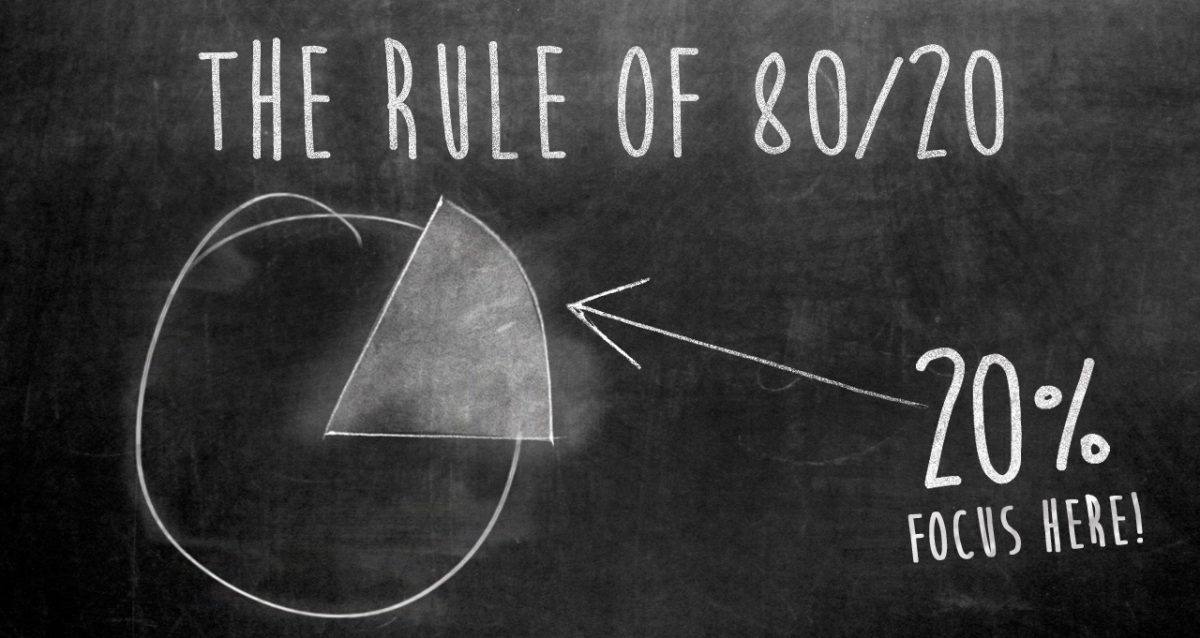The stock market is falling! What do I do?

The answer to this question can never be a precise one.
As we gain experience in the equity markets, the approach to handling market falls will slowly evolve for each one of us.
Now while I don’t claim have a perfect solution, here are few strategies which I believe can help us handle market falls in a much more sane manner.
1.When it comes to decisions, less is more
All of us know that, decision making is extremely tough during a market fall.
While the “What & How” part of the decision making has finally found some audience, unfortunately the equally important issue of when to make decisions is completely ignored.

Given the reach of internet and mobiles, each and every day, every hour, every minute there is always some market related event, news or opinion out there. Add to the mix, that inevitable someone who is hell bent on scaring you with some conveniently handpicked data (sample this).
So, as the market fall continues, most of us get into the trap of constantly evaluating our portfolios and trying to make decisions on an as-and-when basis as new events/news/opinions keep bombarding us.
Each and every time the market falls, the honest truth is that we really have no clue if the fall will continue or the markets will bounce back. There are hundreds of variables determining the short run and it is impossible to predict how each and every one of them will interact together to determine the direction of markets.
So the key is not to look at each and every event/news/opinion as a reminder to take a decision!
In fact, the last thing we want to do, is to go unprepared into a falling market trying to take daily decisions based on the evolving events.
When it comes to decision making, less is more and hence we need to reduce the number of decisions to be taken. Most importantly we need to have a clear pre-decided plan on WHEN to take these decisions.
I personally use a 10% decision making trigger and have reduced my decision making points to less than five during a fall.

- Market falls by 10%?
- Market falls by 20%?
- Market falls by 30%?
- Market falls by 40%?
- Market falls by 50%?
You can either use a common benchmark such as Sensex/Nifty or your own portfolio value for reference.
For eg, if you are using Sensex as reference, the maximum value was 38,645 (on 31-Aug-18)
So decisions will be taken at
- 10% fall ~ Sensex@35,000
- 20% fall ~ Sensex@31,000
- 30% fall ~ Sensex@27,000
- 40% fall ~ Sensex@23,000
- 50% fall ~ Sensex@19,500
In this way, I don’t need to look at the TV each and everyday trying to decide on what to do with my investments.
2.Pre-load your decisions with a what-if-market-falls plan
When we are calm and relaxed, we turn out to be extremely bad in imagining how we will act during times of emotional strain (think fear, anger, hunger, exhaustion, thirst etc).
Such an under-appreciation of how we behave during times of emotional strain is where the trouble actually starts.
How do you think you will behave if the market cracks by say 20%?
“I will of course buy more!” thinks the overconfident self.
But remember, this is you in your “cool & calm” avatar!
Your “emotionally charged” avatar might have different plans.. and if you are like the rest of us it will panic and freeze!
For more on this you can read my earlier post here
How do we solve for this?
We have an unusual person providing us the solution – Our friendly Starbucks Barista!

In 2007, when Starbucks was going through a massive expansion,
But this came with its own issues. The biggest amongst them was to train all the new employees to provide excellent customer service.
Unfortunately for most of the employees Starbucks was their first job and they had never dealt with an angry customer before. While they obviously wanted to a good job, however as soon as they started facing angry customers, a lot of them panicked, some lost their cool and few even snapped back at the customer.
Drawing on behavioral science, Starbucks came up with a simple solution – the “if-then” strategy. They added an extra page at the end of every employee handbook which had lines like, “If a customer yells at me then I will ______”.
The employee would then write in advance what their response would be to this and other tough situations. It allowed employees to plan their response with a cool mindset, so they didn’t need to decide under pressure and risk losing their self control.
They also provided the employees with a simple decision making framework to apply:
The Starbucks LATTE System for Customer Service
- Listen to the Customer
- Acknowledge their complaint
- Take action by solving the problem
- Thank them
- Explain why the problem occurred
Now, instead of reacting with anger or panic, Starbucks employees had a clear game plan to deal with stressful situations.
Since the If-Then and the LATTE system was implemented, employee turnover had decreased, customer satisfaction was up and profits increased!
In essence, we also face a similar problem in a bear market as we go into one completely unprepared without a plan and overestimating our ability to handle the stress and panic.
So, let us apply the Starbucks technique to investing with our own “If-Then” plan.
- If market falls by 10% then I will..
- If market falls by 20% then I will..
- If market falls by 30% then I will..
- If market falls by 40% then I will..
- If market falls by 50% then I will..
Sounds extremely simple, but trust me, once you start thinking about this, you realize how difficult it is to decide even in normal times.
If you have an advisor this is probably a great time to sit together and chart out a plan. If you don’t have one, then make sure you write down your plan as it’s extremely difficult to think clearly in the middle of a falling market.
Also it serves as a reference to check how you thought you would behave during a fall (in your cool and calm avatar) vs how you actually behaved.
You can also check these two posts here (from the super-smart Morgan Housel) and here for getting a rough idea on how to build this plan.
3.Identify and keep a track of experienced investors
As humans we have a natural tendency to follow and conform with the crowd. You can read more about this here
Unfortunately, this tendency of social conformity is at its highest especially in situations of uncertainty.
So in uncertain periods like a falling market, the easiest and fairly intuitive option is to look around and follow the crowd.

And unfortunately, as history has shown, the crowd usually panics at exactly the wrong time.
Now while the obvious solution is not to follow the crowd, it is far easier said than done. So instead of fighting this urge, we need to play along this urge.
I would suggest finding a group of experienced investors or fellow investors to discuss during times of panic. If this sounds difficult, you can take advantage of the internet and identify your “investors to track” list and follow them closely for their views and interviews.
Here are some people whom I personally track:
- Sankaran Naren – ICICI Prudential Mutual Fund
- Kenneth Andrade – Oldbridge Capital
- Rajeev Thakkar – Parag Parikh Mutual Fund
- Shyam Sekar – Ithought
- Kalpen Parekh – DSP Investment Managers
- Neelkanth Mishra – Credit Suisse
Now, by no way am I suggesting that we should blindly follow them. The idea is to carefully evaluate their views (given their experience and maturity) and take our own decisions.
Do let me know on what other strategies you use to stay sane during a market fall.
As always, happy investing!
You can follow Eighty Twenty Investor via Email (1 weekly newsletter) or Twitter
If you loved what you just read, you can check out all my other articles here
Disclaimer: All blog posts are my personal views and do not reflect the views of my organization. I do not provide any investment advisory service via this blog. No content on this blog should be construed to be investment advice. You should consult a qualified financial advisor prior to making any actual investment or trading decisions. All information is a point of view, and is for educational and informational use only. The author accepts no liability for any interpretation of articles or comments on this blog being used for actual investments


Nice written with good facts plus some humour.. Like the Starbucks ‘model’ 👍💯
LikeLike
Thank you so much 🙂
LikeLike
The problem is not in following the great veterans of the market, like, Sankaran Naren, etc., but the problem is what these veterans were saying during the dot.com bubble in 1999-2000 and what they were saying in 2008 global crisis. Did any one of them advise that the markets would crash by 50% and therefore you should get out of the market. I do not recall any body saying this. And that’s exactly the problem. Even during the current NBFC crisis, did any one of them say what is lying ahead of all these NBFCs and what would happen to the massacre in the NBFC space. The only advice which is given is that “go for good companies, companies with good fundamentals and good management, etc.”. That is known to every body. You do not need an advisor to tell you that you should investment in companies with sound fundamentals and good management.
LikeLike
They can’t. They have a fund to run and need to maximize Assets Under Management (AUM). They will only tell you to be “selective” in a heated market. They can’t sell all the stocks even within their own fund. In their position, they need to just buy the best available companies on a given day. They can’t go up on cash beyond 10% of the fund or so.
To be fair, Sankaran Naren hosted a conference call during the last crash to advise people “buy today. If you missed out, buy tomorrow!” He also warned about “end of end cycle” a few weeks back at the index peak. You are not going to get an outright sell reco from these people given their role.
Again in the NBFC space there were warnings from fund managers that their Price to Book is too high. This is the maximum caution we are going to get from them.
LikeLike
Thanks Arun for the nice blog.
How will I know, the market will correct 10% or 50%? Let’s say I decide to invest some money when market falls 10% and it might still continue to fall and reach 50%? Is there a way to find the possibilities of fall%?
LikeLike
Unfortunately there is no way you can know if the fall is going to be just 10% or 50%.. You can only get a rough sense of how risky the market is be evaluating valuations , fundamentals and sentiment. But to precisely predict is not possible as there are too many variables impacting markets in the short run. However in the long run it boils down to earnings growth and change in valuations.
LikeLike
Loved readiing this thank you
LikeLike